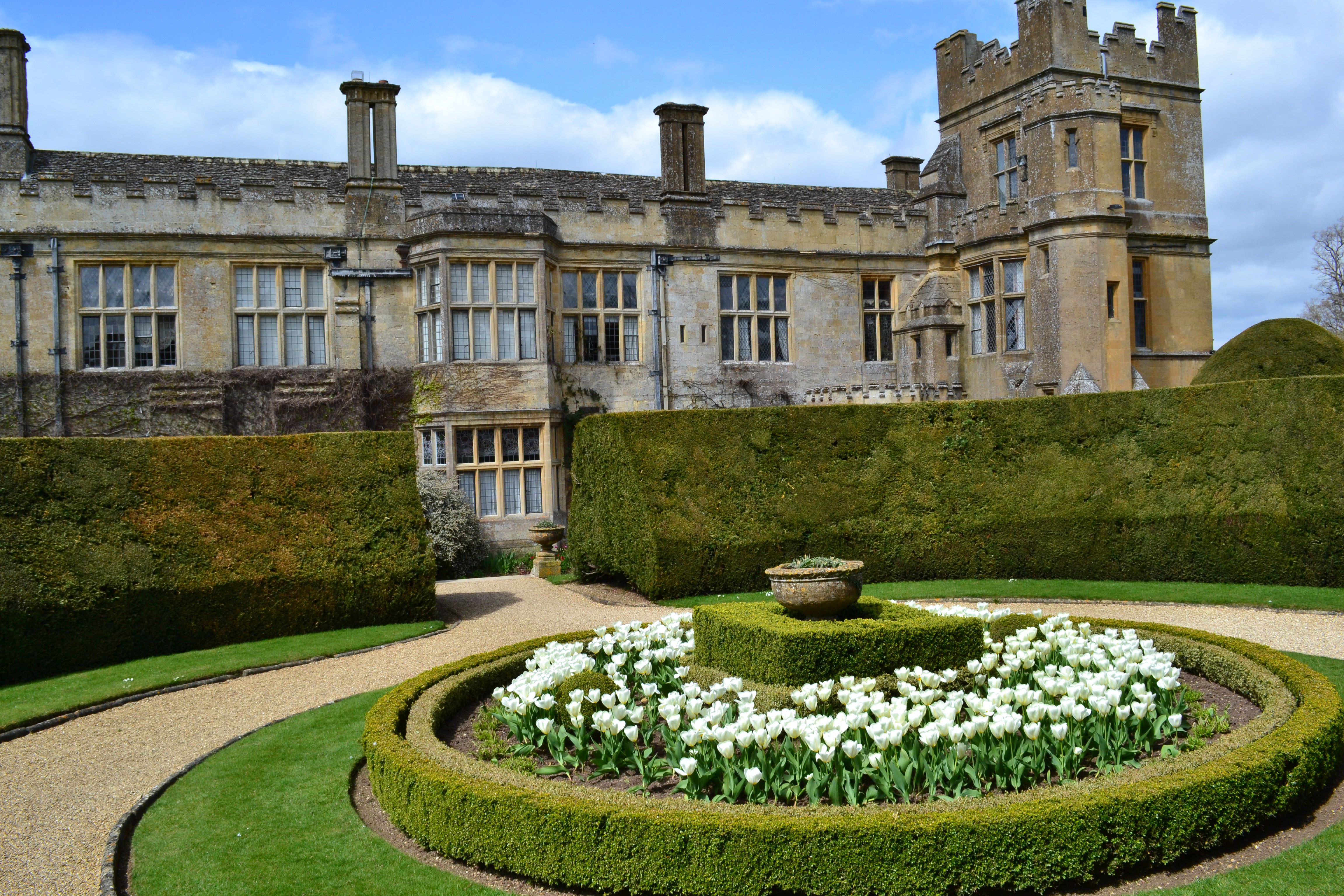The castle was built in 1442 by Ralph Boteler and is now owned by the Dent-Brocklehursts. Its Tudor roots are clear in its architecture, furniture and association with Dowager Queen Katherine Parr, who is buried in the grounds.
Sudeley Castle was built by Ralph Boteler, 1st Baron Sudeley, who inherited the land there in 1442. It ended up with Thomas Seymour, Katherine Parr’s second husband, and she moved to Sudeley for the last few months of her pregnancy. She died there on 5th September 1548 and was buried in the Chapel. Then in 1643, Sudeley Castle surrendered to the Roundheads; just a year later it was attacked by the Parliamentarians. They were ordered to destroy the castle and it was a ruin for 200 years until it was bought by John and William Dent, the glove makers, in 1810. They employed Harvey Eginton to restore the Elizabethan parts of the outer courtyard and bought a lot of the Tudor furniture that you can still see in the hall today.
John Coucher Dent and his wife, Emma, who inherited the house, did a lot of work to the house and gardens, including planting the Mulberry Garden in 1865 - which was particularly relevant for Emma, since she was the daughter of a silk manufacturer. However, all of the other gardens are equally connected with family history, like the Secret Garden, which was planted for the castle’s present owners to celebrate their marriage. The Knot Garden, with box hedges and colourful gravel, is based on a dress worn by Elizabeth I. You can also visit the church in the grounds, where Katherine Parr is buried, and which was restored around 1855.
Today, Elizabeth Dent-Brocklehurst, now Lady Ashcombe, lives in the house with her family. However, you can visit the original 15th-century west wing and the South Hall, where you'll find Dutch painted glass from the late 16th century in the windows. The house also has an important Elizabethan painting, The Allegory of Tudor Succession by Lucas de Heere, showing Henry VIII with his three children. Exhibitions on the Bohun Book of Hours, Dent gloves and personal items belonging to Katherine Parr are also on show, linking Sudeley’s historic past to today’s present.

- Monday:
-
10:00 - 17:00
- Tuesday:
-
10:00 - 17:00
- Wednesday:
-
10:00 - 17:00
- Thursday:
-
10:00 - 17:00
- Friday:
-
10:00 - 17:00
- Saturday:
-
10:00 - 17:00
- Sunday:
-
10:00 - 17:00








